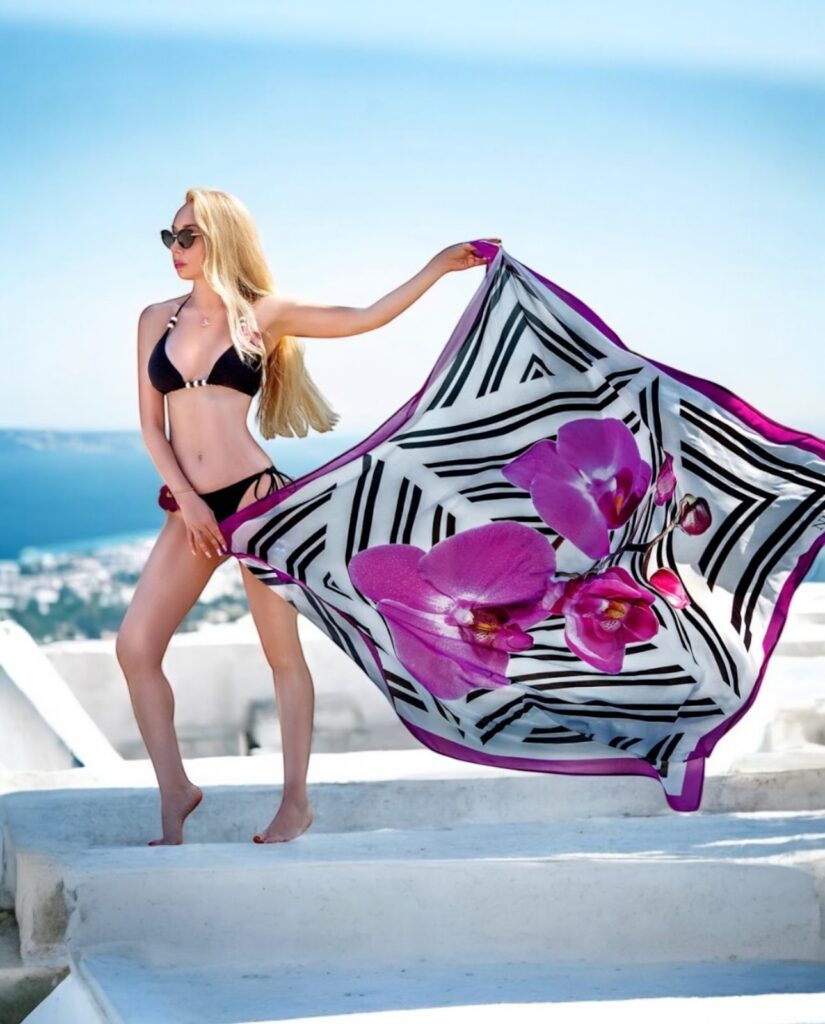
The landscape of luxury fashion is undergoing a profound transformation. The traditional markers of opulence—exclusivity, craftsmanship, and a high price tag—are no longer sufficient to capture the hearts and minds of the modern luxury consumer. A new, non-negotiable pillar has been added to the foundation of high-end fashion: sustainability. This shift is nowhere more apparent than in the world of designer swimsuits. As we look to 2025, it is clear that the tide has turned, and the industry is embracing a future where environmental and ethical responsibility are as coveted as a perfect fit and a stunning design. This article explores the driving forces behind this green wave and delves into the innovative ways that luxury swimwear brands are proving that sustainability and high style can, and must, coexist.
The “Why”: The Unstoppable Forces Driving the Green Revolution
The move towards sustainable luxury is not a fleeting trend; it is a fundamental reshaping of the industry driven by a confluence of powerful forces. At the heart of this change is the rise of the conscious consumer. Today’s luxury buyers are more informed, more discerning, and more ethically aware than ever before. They are no longer passive recipients of trends; they are active participants in a global conversation about the future of our planet. They demand transparency, they value authenticity, and they are increasingly willing to invest their money in brands that align with their personal values. This has created a new paradigm where a brand’s environmental and ethical credentials are as crucial to its desirability as its aesthetic appeal.
The environmental imperative is another undeniable driver of this change. The fashion industry as a whole has a significant environmental footprint, and swimwear is no exception. The production of traditional swimwear relies heavily on virgin synthetic materials like nylon and polyester, which are derived from fossil fuels. The dyeing and finishing processes can be water-intensive and involve the use of harmful chemicals. The rise of fast fashion has also contributed to a culture of disposability, with low-quality swimsuits often ending up in landfills after just a few wears. The stark reality of this environmental impact has created a sense of urgency within the industry, compelling brands to seek out more sustainable alternatives.
Finally, the shift towards sustainability represents a significant market opportunity. The global swimwear market, valued at over $21 billion in 2024, is projected to reach over $30 billion by 2032. A significant portion of this growth is being driven by the sustainable segment of the market. The luxury swimwear market, in particular, is seeing a surge in demand for eco-friendly options, with a projected compound annual growth rate (CAGR) of over 5%. This demonstrates that sustainability is not just good for the planet; it is also good for business. Brands that embrace this change are not only future-proofing their operations but also tapping into a powerful and growing market segment.
The “How”: Innovations in Eco-Friendly Swimwear
The transition to sustainable luxury has been made possible by a wave of innovation in materials and production processes. The development of high-performance, eco-friendly fabrics has been a game-changer for the industry, allowing brands to create designer swimsuits that are both beautiful and sustainable.
Revolutionary Materials
Two materials, in particular, have emerged as leaders in the sustainable swimwear space:
- ECONYL®: This revolutionary material is a form of regenerated nylon that is made entirely from waste products, including fishing nets, fabric scraps, and industrial plastic. The process involves collecting this waste, cleaning and sorting it, and then regenerating it back into a high-quality nylon yarn that is indistinguishable from virgin nylon. This process not only diverts waste from our oceans and landfills but also reduces the global warming impact of nylon by up to 90% compared with the material from oil.
- Repreve®: This is a performance fiber made from recycled materials, primarily plastic bottles. The process involves collecting and sorting post-consumer plastic bottles, cleaning them, and then melting them down to create a high-quality polyester fiber. Repreve® is not only a sustainable alternative to virgin polyester but also offers excellent performance characteristics, including moisture-wicking, durability, and vibrant color retention.
Beyond these two industry leaders, other innovative materials are also gaining traction, including plant-based polyamides and Q-Nova, a recycled nylon made from post-industrial waste.
Sustainable Production Practices
In addition to using eco-friendly materials, luxury swimwear brands are also adopting more sustainable production practices. This includes seeking out certifications like OEKO-TEX, which ensures that fabrics are free from harmful chemicals, and the Global Recycled Standard (GRS), which verifies the recycled content of materials. Brands are also focusing on low-impact processes, such as water-efficient dyeing techniques and the use of recyclable packaging. Furthermore, there is a growing emphasis on ethical manufacturing, with brands prioritizing fair wages and safe working conditions for their employees.
The Brands Leading the Charge: A Look at Sustainable Luxury
A number of forward-thinking luxury brands have embraced the sustainable movement, proving that it is possible to create exquisite designer swimsuits without compromising on environmental or ethical principles.
| Brand | Key Sustainable Practices |
|---|---|
| Matteau | Uses ECONYL®, Repreve®, and Q-Nova; focuses on slow-fashion principles. |
| Hunza G | Known for its signature crinkle-stretch fabric, which is produced in a way that minimizes waste. |
| Agua by Agua Bendita | Employs local artisans in Colombia and prioritizes sustainable materials. |
| Bondi Born | An Australian brand that uses eco-friendly fabrics and is committed to sustainable production. |
Matteau, an Australian label, has emerged as a leader in the sustainable luxury space. The brand’s elegant, minimalist designs are crafted from a range of sustainable materials, including ECONYL® for its printed swimwear, Repreve® for its plain swimwear, and Q-Nova for its crinkle-textured pieces. This commitment to sustainability is woven into the very fabric of the brand’s identity, and it has resonated with a discerning clientele that includes celebrities like Rosie Huntington-Whiteley and Jennifer Lawrence.
The Future of Designer Swimsuits: A Synthesis of Style and Substance
The green wave in the luxury swimwear market is not a passing fad; it is a fundamental shift that is here to stay. As consumer awareness continues to grow and material innovation continues to advance, sustainability will become an increasingly integral part of the luxury equation. The future of designer swimsuits lies in the seamless synthesis of high style and ethical substance. The brands that will thrive in this new landscape are those that can offer their customers a product that is not only beautiful and well-crafted but also a reflection of their values.
Conclusion
The world of designer swimsuits is in the midst of a green revolution. Driven by the demands of the conscious consumer, the urgency of the environmental imperative, and the allure of a growing market opportunity, luxury brands are embracing sustainability like never before. Through the use of innovative materials like ECONYL® and Repreve® and the adoption of more ethical and eco-friendly production practices, these brands are proving that luxury and sustainability are not mutually exclusive. As we look to 2025 and beyond, it is clear that the future of luxury beachwear is green, and the most coveted designer swimsuits will be those that are as kind to the planet as they are beautiful to behold.
